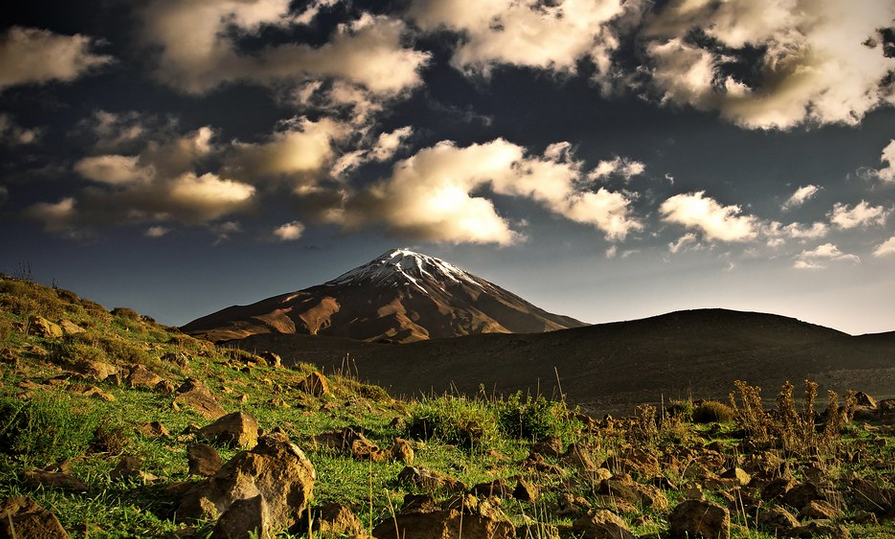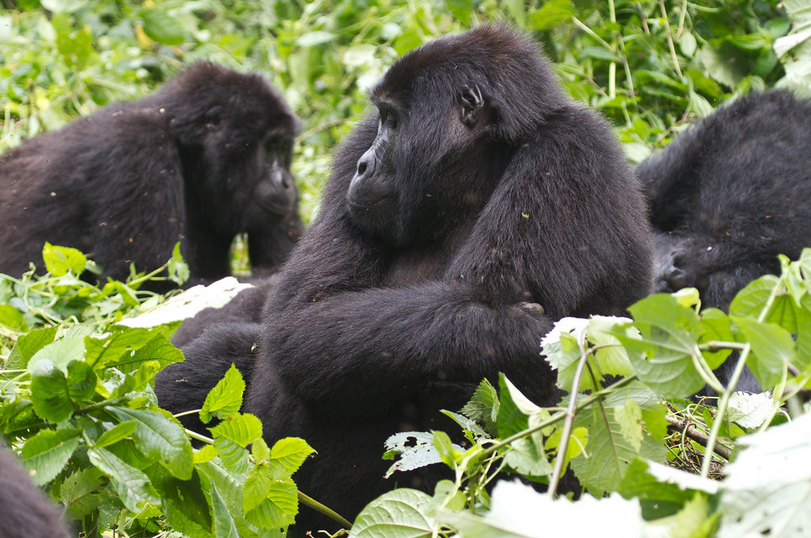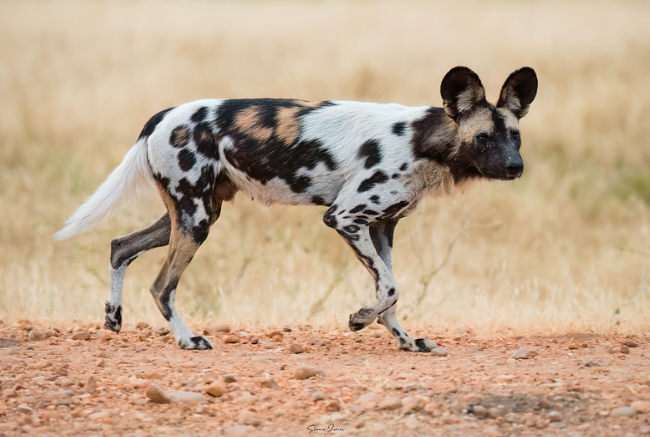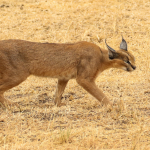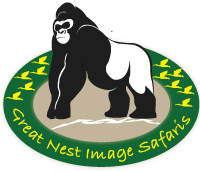Mountain Kilimanjaro Tanzania
Mountain Kilimanjaro Tanzania : also known as the “mountain of greatness” is a dominant volcano in Tanzania. In fact, it is the highest peak on the African continent and the world’s tallest free standing mountain. A number of theories exist about the meaning and the origin of the name Mountain Kilimanjaro. One theory is that the name is a mix of the Swahili word “Kilima”. Meaning Mountain and the KiChagga word “Njaro” loosely translated as whiteness. Another theory is that Kilimanjaro is the European pronunciation of a KiChagga phrase meaning “we failed to climb it”. Also called a strato volcano, Kilimanjaro is made up of three volcanic cones; Kibo, Mawenzi and Shira. Kibo is the summit of the mountain and the tallest of the three volcanic formations while Shira and Mawenzi are extinct.
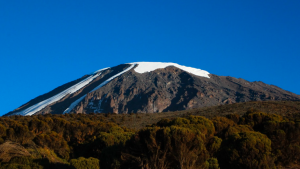 The highest point on Kobo’s crater rim is called “Uhuru” the Swahili word for freedom. However, Mount Kilimanjaro’s middle and lower slopes receive more rain than the surrounding plains. In 1973, the mountain and its six surrounding forest corridors were named Kilimanjaro National Park. This was specifically to protect its unique environment since it’s a major climbing destination. The Park was named a United Nations Educational, Scientific and Cultural Organization (UNESCO) World Heritage site in 1987. There are seven official trekking routes by which to ascend and descend Mount Kilimanjaro. These include; Machame, Marangu, Lemosho, Mweka, Shira, Rongai and Umbwe. The Machame route can be completed in 6-7 days, Lemosho in 6-8 days and the Northern Circuit routes in 9 days and more.
The highest point on Kobo’s crater rim is called “Uhuru” the Swahili word for freedom. However, Mount Kilimanjaro’s middle and lower slopes receive more rain than the surrounding plains. In 1973, the mountain and its six surrounding forest corridors were named Kilimanjaro National Park. This was specifically to protect its unique environment since it’s a major climbing destination. The Park was named a United Nations Educational, Scientific and Cultural Organization (UNESCO) World Heritage site in 1987. There are seven official trekking routes by which to ascend and descend Mount Kilimanjaro. These include; Machame, Marangu, Lemosho, Mweka, Shira, Rongai and Umbwe. The Machame route can be completed in 6-7 days, Lemosho in 6-8 days and the Northern Circuit routes in 9 days and more.
Facts about Mount Kilimanjaro
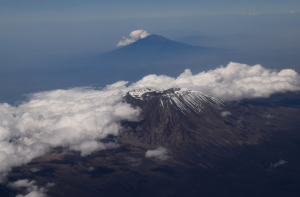
A variety of animals live in the areas surrounding of the mountain. For example in the Kilimanjaro rainforest especially around the first campsite (Big Forest Camp) on the Lemosho route. Animals here include; the blue monkey, White necked raven, Bush baby, four striped mice, etc. Since the high attitude cannot support plant or animal life, insects such as spiders, ants and leeches can be found in the rain forest zone. This zone also host rats, snakes, birds and some plants such as huge tree ferns, sycamore trees, junipers and moss. Furthermore, there are about 300 lowland gorillas on Mount Kilimanjaro. It is possible for one to visit some of their families through walking in the forest of the park with guidance of the ranger.
Because of its shrinking glaciers and ice fields, this iconic mountain is a home to the largest ice fields in Africa. The Kilimanjaro weather at the summit, Uhuru point, at night the temperature can range between 20 and -20 degrees Fahrenheit. This is due to the great height of the mountain whereby it creates its own weather. Additionally, the Kilimanjaro has got snow because the winds carry moisture from the ocean. When they hit large objects like mountains, they rise, cool and condense forming clouds, precipitations, rain and snow. Below the altitude, increased evaporation and human water usage reduces the waterflows. River Lumi and River Pangani drain Mount Kilimanjaro on both the eastern and southern sides respectively.
What to do in Mount Kilimanjaro National Park
Mountain climbing
This is the most and common done activity while at Mount Kilimanjaro. You will climb Africa’s free-standing mountain giving you a thrilling experience you have never imagined. You will also be able to climb different peaks such as the Kibo peak. This is the highest and snowcapped peak throughout the year offering magnificent views of the surrounding towns from far. On the other hand, Shira peak is known to be the oldest and formed up a plateau. Thus providing spectacular grasslands and various plant species with a lot of wildlife.
Canoeing
Visitors to Mount Kilimanjaro National Park enjoy a guided canoe trip on Lake Momela. In fact, this is such a fantastic experience with knowledgeable guides. While paddling on the lake, look out over the forest, bush and grassland as well as Mount Meru to the west. You will also sight animals like buffaloes, waterbucks, duikers, hippos, giraffes, zebras, etc. Also expect birdlife such as flamingoes that stain the water pink when seen from a far. Other birds include; pelicans, Egyptian geese, great crested grebe, southern pochards, maccoa ducks, African jacanas, etc.
Birding
The Park is a home to over 150 bird species some of which are residents while others are migratory. These birds include; resident black shouldered kite, blue napped mouse birds, white necked raven. Long tailed trogon, African fish eagles, Gabar goshawk, African pygmy kingfisher, white checked barbet. Red capped robin chat, grey hornbill, not to mention but a few. However, birding is best done in November to April when birds migrate the most.
Guided nature walks
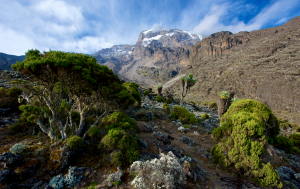
These walks can be done at the slopes of the Mountain Forest canopy and you can encounter a lot of primates. These include; the red-tailed monkey, black and white colobus, olive baboons and a lot of plant species. You will also have a panoramic view of the Chagga farmlands and neighboring towns.
Wildlife
A number of wild animals can be seen at the Shira plateau plains while on your safari to Mount Kilimanjaro national park. However, animals here are not as many as compared to other national parks in Tanzania. These animals include; vervet monkeys, honey badger, black and white colobus, bush babies, genet cats. Aardvark, elands, baboons, elephants, four striped mice, etc.
Camping
Camping within one of the 32 camping sites along the second hiking route will be memorable. While here, you will have an exclusive bush experience. These campsites provide amazing and comfortable accommodation as well as delicious meals to suit your hiking experience.
Picnicking
The Park boasts with the 13 picnicking sites where you can enjoy this activity in the uninterrupted wilderness. Some of these picnic sites include; Last water, Daraja refu, Wona, Kilimamchele, Jiwe la mbula, etc. Therefore, don’t forget to pack lunch to enjoy from one of the sites.
Cycling
You can make your safari more memorable and experimental by cycling to the highest peak of the Mountain. This can by done through Kilema route, though additional fees might be added for the activity. There are three main stations to cycle in and this activity that will expose you to farmlands of the Chagga people. Note that; this activity should be done by well experienced mountain bikes and a well knowledgeable tour guide.
Filming
Being Africa’s free-standing mountain, it offers panoramic views perfect for filming adventure movies. One of the famous films that scooped an award was “the snows of Kilimanjaro” which was done in 1952 from this mountain.
How to get there
The Park can be accessed within two hours from Arusha and one hour from Moshi town. It is also an hour and half drive from Kilimanjaro International Airport.

